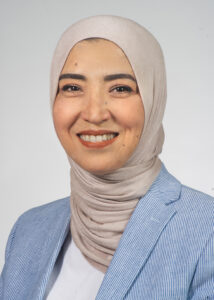Going digital

Thanks to a new software, developed through a collaboration between Texas A&M School of Dentistry and the College of Engineering, the school’s sealant program will soon be able to serve the Dallas community more efficiently and with greater effectiveness. The software was created by a team of engineering graduate students to digitize the program’s data entry, which could then be used to compile useful metrics.
“We had a need for data entry to be saved more easily and to be compiled for the faculty, students and program coordinator,” said Dr. Amal Noureldin, director of the predoctoral program and interim department head for public health sciences “Data entry should be done in an easy way, but it was never like that for years. We tried reaching out to the CDC because they already have an established software for that, but they had suspended their own software.”
For 20 years, the dental sealants program has served Dallas children, almost a third of whom live in poverty and have limited access to routine dental care. The program focuses on third- and fourth- graders within the Dallas, Richardson, Garland and Irving public school districts. Dental and dental hygiene students apply sealants, or protective coatings to the children’s teeth, lowering the risk of dental decay and fostering long-term oral health. In addition to providing crucial care for local children, the program also facilitates valuable hands-on training for the students providing treatment.

Noureldin said following a hiatus during the COVID-19 pandemic, the need to streamline data entry became clear. The program requires a lot of paperwork, but the school lacked a good software to compile it.
As Noureldin was studying the school’s options, she heard from a professor in the Texas A&M College of Engineering, seeking real-world projects for students in a software engineering class. Noureldin jumped at the partnership, and in fall of 2023, graduate student Jaydeep Radadiya, class of 2025, led a team of six students in creating the program for the dental school.
“The client didn’t really know what they were looking for specifically but had a basic understanding of what they wanted,” Radadiya said. “We wanted to give them a product that would be sustainable for the next two to three semesters. Then future graduate students could build on it and improve it.”
Radadiya explained their goal in any software project is to first create an MVP, or a “Minimal Viable Product.” This is the bare bones of the software, achieving the client’s basic needs without any frills. The frills can come later, once the foundation is laid, he said.
Noureldin and Lovekamp had two main requirements for the sealant program’s new software: digitize all the paperwork and compile the data in the paperwork into readable statistics. This would allow Noureldin and Lovekamp to better evaluate the program and find areas that need improvement.
“They described the expectations and what they were looking for,” Radadiya said. “We then mapped out our plan and cost schedule and combined their requirements and our requirements into a working product. This was meant to be a semester-long project. We really took off in the first week of September and had to get our final report done in the month of December.”
Noureldin and Lovekamp met with the engineers weekly for project updates, and by the end of the semester, Radadiya said they’d made a web application for the data entry and basic statistical analysis.
“Our goal was always something that’s sustainable and can be built upon,” he said. “We made the base floor, and in the future, different groups can add another floor.”
Radadiya attributed their success to the patience and trust Noureldin and Lovekamp gave him and his team and the open communication between the two groups. He also said he could not have asked for a better team of engineers; they were all passionate and had a great deal of initiative. Most of all, though, he said knowing this was a real-world project, that would have actual ramifications and would help real people, drove them to give their best.
“This wasn’t just for some class; this was going to be in the real world and outlast us,” he said. “We’re still connected with that project, in a sense, our names and our minds. That means something.”
Noureldin said this was only phase one of the overall digitization project. Phase two will be to build on this foundation, further streamlining processes and gaining better statistical analysis from their data. They are aiming to have the software in full use by fall 2024.
“This was a great initial step and a great achievement on their end,” Noureldin said. “They created a very interactive and very nice software for the sealant program’s data entry.”